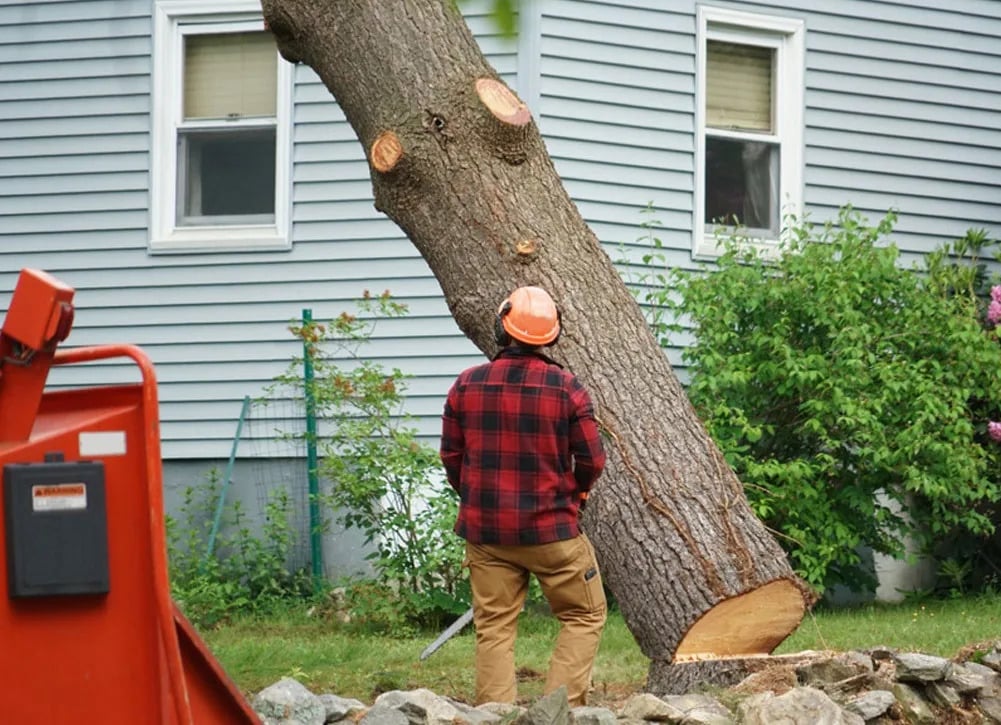Tree removal is a necessary task in various situations, whether it’s due to a tree’s declining health, potential safety hazards, or the need to clear space for construction. While tree removal may seem straightforward, it can be a hazardous undertaking if not done with proper precautions. In this blog post, we will explore essential safety measures to ensure that tree removal is conducted safely and efficiently.
Why Tree Removal Safety Matters
Tree removal involves working with heavy equipment, sharp tools, and substantial weights, which inherently pose risks. Here are some compelling reasons why tree removal safety should be a top priority:
Personal Safety
Ensuring the safety of those involved in the tree removal process, including tree workers and bystanders, is paramount.
Property Protection
Safely removing a tree minimizes the risk of damage to nearby structures, vehicles, or landscaping.
Legal and Liability Issues
Failure to follow safety protocols can lead to legal repercussions and potential liability for injuries or property damage.
Environmental Considerations
Proper tree removal techniques can also help protect the environment by minimizing damage to surrounding vegetation and ecosystems.
Tree Removal Safety Measures
Assessment and Planning
Start by assessing the tree’s condition and the area around it. Identify any hazards, such as nearby structures, power lines, or obstacles. Develop a removal plan based on these assessments.
Safety Gear
Ensure that all personnel involved in tree removal wear appropriate personal protective equipment (PPE), including helmets, eye protection, hearing protection, gloves, and chainsaw-resistant leg protection.
Training and Certification
Tree removal should be performed by trained and certified arborists or tree service professionals who are familiar with industry best practices and safety standards.
Equipment Inspection
Regularly inspect and maintain all equipment, including chainsaws, ropes, and rigging. Faulty equipment can lead to accidents.
Clear the Area
Keep the work area clear of unauthorized personnel, including bystanders and pets. Establish a safe zone and communicate it to everyone on-site.
Proper Tools and Techniques
Use appropriate tools and equipment for the job, and employ proper cutting and felling techniques to control the direction of the tree’s fall.
Rigging and Lowering
If necessary, use rigging and lowering techniques to safely lower sections of the tree to the ground, preventing damage to structures and vegetation below.
Safe Cutting Practices
Ensure that chainsaw operators follow safe-cutting practices, including the use of chains with sharp teeth, proper chain tension, and maintaining a firm grip on the saw.
Communication
Establish clear communication between all team members during the tree removal process. Use hand signals and radios if needed.
Emergency Response
Have a plan in place for responding to emergencies, including first aid and evacuation procedures. Keep first-aid kits and fire extinguishers on hand.
Waste Disposal
Properly dispose of tree debris, branches, and logs according to local regulations and guidelines.
Post-Removal Inspection
After the tree is removed, inspect the area for any remaining hazards, such as sharp branches or unstable ground.
Tree removal is a task that requires careful planning and execution to ensure the safety of people and property. By following these tree removal safety measures and entrusting the job to qualified professionals, you can minimize the risks associated with tree removal and ensure a safe and successful outcome. Remember that safety should always be the top priority when dealing with tree removal projects of any size or complexity.
If you’re looking for a Tree Service, contact Tennet Tree Service for more information. Take the first step towards a more stunning landscape!
Website: www.tennetttree.com
Contact Us: (860) 423-0895

